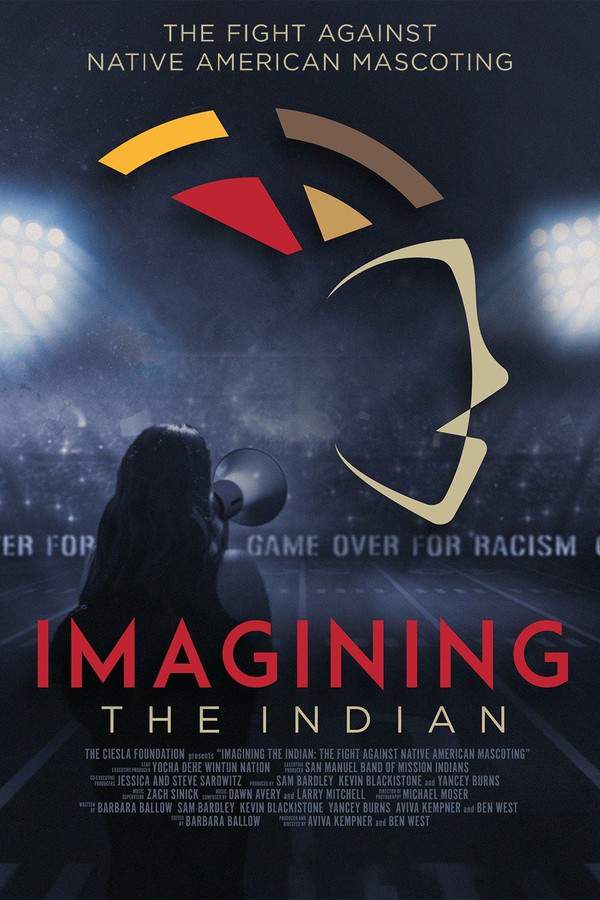Rumble: The Indians Who Rocked The World 2017

This documentary explores the significant, yet often unrecognized, contributions of Indigenous musicians to North American popular music. It highlights the groundbreaking work of artists like Link Wray and Jimi Hendrix, and others who defied convention and helped shape the sound of generations. Through compelling stories and archival footage, Rumble: The Indians Who Rocked The World celebrates the innovative styles and enduring legacy of Native American artists who profoundly impacted the music landscape.
Does Rumble: The Indians Who Rocked The World have end credit scenes?
No!
Rumble: The Indians Who Rocked The World does not have end credit scenes. You can leave when the credits roll.
Meet the Full Cast and Actors of Rumble: The Indians Who Rocked The World
Explore the complete cast of Rumble: The Indians Who Rocked The World, including both lead and supporting actors. Learn who plays each character, discover their past roles and achievements, and find out what makes this ensemble cast stand out in the world of film and television.
External Links and Streaming Options
Discover where to watch Rumble: The Indians Who Rocked The World online, including streaming platforms, rental options, and official sources. Compare reviews, ratings, and in-depth movie information across sites like IMDb, TMDb, Wikipedia or Rotten Tomatoes.
Ratings and Reviews for Rumble: The Indians Who Rocked The World
See how Rumble: The Indians Who Rocked The World is rated across major platforms like IMDb, Metacritic, and TMDb. Compare audience scores and critic reviews to understand where Rumble: The Indians Who Rocked The World stands among top-rated movies in its genre.

The Movie Echo Score
Rumble: The Indians Who Rocked the World delivers a compelling reevaluation of Native American contributions to American music, anchored by insightful archival material and expert commentary. The documentary shines in its articulation of individual artists’ stories and the emotional resonance of their musical legacies, even as its episodic structure occasionally undermines narrative coherence. The film’s sensory richness and historical framing provide a valuable introduction to an overlooked chapter of Americana. Overall, it leaves a lasting impression despite moments of uneven pacing.
The Movie Echo Score Breakdown for Rumble: The Indians Who Rocked The World

Art & Craft
In terms of direction and craft, Rumble presents a visually coherent tribute to music history under measured guidance. The film employs archival footage and interviews with a consistent visual palette, though its editing sometimes leads to abrupt transitions between segments. Production design effectively evokes the era of the featured artists without distraction. While the overall aesthetic remains engaging, occasional fluctuations in pacing detract slightly from its technical polish.

Character & Emotion
When it comes to character depth, the documentary offers emotionally charged vignettes of key Native American musicians. The filmmakers highlight personal stories with poignant commentary, resulting in moments of genuine resonance, especially in segments profiling artists such as Steve Salas and Randy Castillo. Nonetheless, the breadth of coverage sometimes limits deeper exploration of individual backgrounds. On balance, the film establishes a strong emotional connection despite occasional departures from sustained focus.

Story & Flow
In terms of story and flow, Rumble constructs an informative overview of Native American influence on blues and rock ’n’ roll. The documentary’s original premise is engaging, but its episodic structure and frequent topic jumps can hinder narrative momentum. Pacing varies from immersive segments to sections that feel cursory, reflecting the challenge of encompassing extensive history within a limited runtime. Overall, the film offers valuable insights despite moments of uneven coherence.

Sensory Experience
When it comes to sensory experience, Rumble excels through its rich soundtrack and dynamic sound design. The documentary showcases an array of musical performances with clarity and depth, while a nuanced audio mix highlights each genre’s distinctive timbres. Visually, archival footage and contemporary interviews are cohesively framed to complement the audio narrative. As a result, the film delivers a compelling immersion into the musical traditions it celebrates.

Rewatch Factor
Regarding rewatch factor, the film’s wealth of musical examples and historical insights encourages repeated viewings. Discovering lesser-known artists and tracing their influence on mainstream genres offers fresh nuances on subsequent viewings. However, the sporadic pacing and occasional surface-level treatment of individual stories may limit its appeal for every repeat audience. In sum, Rumble retains enduring interest for music enthusiasts, though its structural flaws may temper full reengagement.

73
Metascore
8.0
User Score


91%
TOMATOMETER

88%
User Score

7.8 /10
IMDb Rating

77
%
User Score

3.71/5
From 7 fan ratings
Take the Ultimate Rumble: The Indians Who Rocked The World Movie Quiz
Challenge your knowledge of Rumble: The Indians Who Rocked The World with this fun and interactive movie quiz. Test yourself on key plot points, iconic characters, hidden details, and memorable moments to see how well you really know the film.
Rumble: The Untold Rock Legacy Quiz: Test your knowledge on the Native American influence in rock 'n' roll as highlighted in 'Rumble: The Indians Who Rocked The World.'
What is the title of Link Wray's instrumental masterpiece discussed in the documentary?
Rumble
Fever
Smoke on the Water
Eruption
Show hint
Full Plot Summary and Ending Explained for Rumble: The Indians Who Rocked The World
Read the complete plot summary of Rumble: The Indians Who Rocked The World, including all major events, twists, and the full ending explained in detail. Explore key characters, themes, hidden meanings, and everything you need to understand the story from beginning to end.
Many musical artists and genres contributed to the development of rock music, yet arguably, no single piece has had a greater impact than Link Wray’s iconic 1958 instrumental, “Rumble.” This groundbreaking work by the American Indian rock guitarist and singer/songwriter is noted for its unique sound. Filmmaker Martin Scorsese reflects on the song’s powerful essence, stating, > “It is the sound of that guitar … that aggression.” “Rumble” was revolutionary as it was the first track to incorporate distortion and feedback, pioneering the rock power chord, and infamously, it became one of the rare instrumental singles banned from radio due to concerns it might spark violence.
The documentary RUMBLE delves into the significant role of Native American influence in musical history, emphasizing the resilience against efforts to suppress and erase Indian culture in the United States. It highlights that early blues pioneers had roots not only in African American culture but also in Native American traditions, showcasing that one of the foremost jazz vocalists drew inspiration from Native American melodies. As folk rock emerged in the 60s and 70s, the contributions of Native Americans were vital in shaping its trajectory.
Prominent artists with Indigenous heritage such as Charley Patton, Mildred Bailey, Jimi Hendrix, and Buffy Sainte-Marie left an indelible mark on the history of music, often without recognition of their cultural backgrounds.
Through vibrant re-creations, untold narratives, concert footage, archival materials, and interviews, RUMBLE shares the stories of these legendary Native musicians as narrated by some of America’s most celebrated music icons. Figures like Quincy Jones, Tony Bennett, Iggy Pop, Steven Tyler, and Stevie Van Zandt offer insights into their experiences and inspirations drawn from these artists.
RUMBLE ultimately reveals how Indigenous music has been woven into the very fabric of American popular music from its inception, a contribution that has long been overlooked—until now.
Uncover the Details: Timeline, Characters, Themes, and Beyond!

Coming soon on iOS and Android
The Plot Explained Mobile App
From blockbusters to hidden gems — dive into movie stories anytime, anywhere. Save your favorites, discover plots faster, and never miss a twist again.
Sign up to be the first to know when we launch. Your email stays private — always.
Watch Trailers, Clips & Behind-the-Scenes for Rumble: The Indians Who Rocked The World
Watch official trailers, exclusive clips, cast interviews, and behind-the-scenes footage from Rumble: The Indians Who Rocked The World. Dive deeper into the making of the film, its standout moments, and key production insights.
Cars Featured in Rumble: The Indians Who Rocked The World
Explore all cars featured in Rumble: The Indians Who Rocked The World, including their makes, models, scenes they appear in, and their significance to the plot. A must-read for car enthusiasts and movie buffs alike.
Rumble: The Indians Who Rocked The World Themes and Keywords
Discover the central themes, ideas, and keywords that define the movie’s story, tone, and message. Analyze the film’s deeper meanings, genre influences, and recurring concepts.

Unlock the World of Movies with Our Comprehensive Wiki
Dive into our Movie Wiki for in-depth film encyclopedia entries, including cast biographies, production trivia, plot synopses, behind-the-scenes facts, and thematic analyses. Whether you’re researching iconic directors, exploring genre histories, or discovering hidden easter eggs, our expertly curated movie database has everything you need to fuel your cinematic passion.

Similar Movies To Rumble: The Indians Who Rocked The World You Should Know About
Browse a curated list of movies similar in genre, tone, characters, or story structure. Discover new titles like the one you're watching, perfect for fans of related plots, vibes, or cinematic styles.
Quick Links: Summary, Cast, Ratings, More

What's After the Movie?
Not sure whether to stay after the credits? Find out!
Explore Our Movie Platform
New Movie Releases (2026)
Famous Movie Actors
Top Film Production Studios
Movie Plot Summaries & Endings
Major Movie Awards & Winners
Best Concert Films & Music Documentaries
Movie Collections and Curated Lists
© 2026 What's After the Movie. All rights reserved.












































